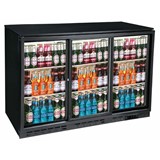Key Takeaways
- Burnout is a business problem, not an employee problem. It's a systemic issue caused by the work environment, not a personal failing. Addressing it directly impacts your bottom line by reducing turnover, absenteeism, and customer churn.
- Empowerment is the most effective antidote. Giving your team the autonomy to solve customer problems on the spot, without needing a manager's approval for every small issue, significantly reduces feelings of powerlessness, a primary driver of burnout.
- Legal Duty, Not a Perk: Under Australian WHS law, you have a legal duty to manage the psychosocial hazards (like high workload and customer aggression) that cause burnout. Ignoring this is a compliance risk, not just poor management
- Psychological safety is non-negotiable. Your team must feel safe to admit they’re struggling, report abusive customer behaviour without fear of blame, and know they will be supported. This is the foundation of a resilient team.
- Stop normalising customer abuse. Equip your team with de-escalation training and clear protocols for when to refuse service or call a manager. Treating customer aggression as a serious workplace hazard, not "part of the job," is critical.
- Fix the system, not the person. Sustainable change comes from fixing systemic issues like unfair rostering (e.g., "clopening" shifts), inadequate break times, and unrealistic workloads, not from offering superficial wellness perks.
Introduction: The invisible crisis at your front counter
Your front-of-house team is the face of your business, the first and last impression you make on every customer. But in Australia's current landscape of staff shortages, economic uncertainty, and rising customer aggression, this critical team is facing a crisis of its own: burnout. A 2023 report from Safe Work Australia revealed that work-related psychological injuries are on the rise, with a staggering 9.2 weeks of work lost per claim, far higher than for physical injuries. For front-of-house roles, this isn't just a statistic; it's the daily reality of emotional exhaustion and feeling undervalued.
This isn't an article about offering more pizza parties or wellness apps. This is a practical guide for Australian business owners and managers who understand that burnout is a costly, systemic issue that requires a strategic response. We'll explore the real drivers of burnout in customer-facing roles and provide actionable, low-cost strategies to build a more resilient, engaged, and effective frontline team, the single greatest asset your business has.
The true cost of a burnt-out team
Before diving into solutions, it's crucial to reframe burnout. It's not just "stress." The World Health Organisation defines it by three distinct dimensions: feelings of energy depletion or exhaustion; increased mental distance from one’s job or feelings of cynicism; and reduced professional efficacy.
When your front-of-house team is running on empty, the business bleeds in ways you might not immediately see:
- Sky-high turnover: The cost of replacing and training a single employee can range from 30% to 150% of their annual salary. With Australian businesses already facing significant skills shortages, retaining your experienced staff is a financial imperative.
- Increased "presenteeism": Your team might be physically at work, but they are mentally checked out. This leads to costly errors, a lack of initiative, and a visible drop in the quality of customer interactions.
- A toxic customer experience: A burnt-out employee simply doesn't have the emotional capacity to provide warm, empathetic service. Their exhaustion and cynicism are palpable to customers, directly impacting satisfaction, loyalty, and your brand's reputation.
Empowerment: The antidote to powerlessness
A primary cause of burnout is a feeling of being powerless, caught between customer demands and rigid company policies. When your team has to constantly say "I'll have to get my manager" for minor issues, it erodes their confidence and frustrates everyone involved. Empowerment is about giving them the trust and autonomy to manage their domain.
A realistic scenario: The frustrated diner
A customer at a busy cafe is upset because their order is taking longer than expected. A disempowered team member can only offer repeated, empty apologies, escalating the customer's frustration.
The empowered solution:
An empowered team member has tools at their disposal. You can authorise your staff to make decisions up to a certain value without approval. For instance:
- "I'm so sorry for the delay, we're a little backed up. The coffee is on us today for your patience."
- "I can see you're in a hurry. While you wait, can I get you a pastry from the cabinet, on the house?"
This instantly de-escalates the situation, makes the customer feel heard, and turns a potential negative review into a positive experience. More importantly, it allows your employee to be a problem-solver, not just a problem-absorber, giving them a sense of control and professional efficacy.
Fixing the environment, not just the employee
You can't expect your team to thrive in a system that sets them up to fail. Often, the biggest drivers of burnout are baked into the operational structure of the business. It's time to critically examine your processes.
- Rethink your rostering: Are you scheduling staff for "clopening" shifts (closing the store late at night and opening it again early the next morning)? This practice is a notorious cause of exhaustion. Ensure there is a minimum 10-12 hour gap between shifts. Also, where possible, provide rosters at least two weeks in advance to allow for proper life planning.
- Make breaks non-negotiable: In a busy service period, it's easy for breaks to be delayed or cut short. However, research consistently shows that proper breaks are essential for maintaining focus and emotional regulation. A study by the Black Dog Institute highlights the strong link between work stress and mental health issues. Enforcing paid breaks isn't just a legal requirement; it's a critical burnout prevention tool. Create a culture where taking a full break is seen as a professional responsibility.
- Design a better backstage: What does your break room look like? Is it a cluttered corner of a stockroom, or is it a clean, comfortable space where staff can truly switch off for 30 minutes? Providing a decent staff area with comfortable seating and amenities costs very little but sends a powerful message that you value your team's well-being.
Your legal duty of care: Burnout as a workplace hazard
Viewing burnout as simply a matter of employee well-being or HR policy is a common and costly mistake. In Australia, the conversation has fundamentally shifted. Psychological health is now recognised with the same legal seriousness as physical health in the workplace, and as a business leader, you have a clear and enforceable duty of care.
This legal responsibility is centred on the concept of psychosocial hazards. These are aspects of work that can create a stress response and risk psychological harm. For your front-of-house team, these hazards are familiar: high workloads, exposure to customer aggression, low job control, and lack of support. Under Work Health and Safety (WHS) laws, you are legally required to identify these risks and take steps to eliminate or minimise them, just as you would for a slippery floor or faulty equipment.
To provide clear guidance, Safe Work Australia has published the model Code of Practice: Managing psychosocial hazards at work. This isn't just a helpful document; it's a practical guide that regulators refer to when assessing whether a business has met its legal duties. Ignoring the systemic causes of burnout discussed in this article isn't just poor leadership, it's a direct failure to manage known workplace hazards, exposing your business to significant penalties and costly psychological injury claims.
Psychological safety: Your team’s invisible shield
Psychological safety is the shared belief that it is safe to take interpersonal risks. For a front-of-house team, this means knowing they can report difficult situations without being blamed and admit they are struggling without fear of judgment.
A 2022 survey of retail workers in Australia found that 88% had experienced verbal or physical abuse from customers. The problem is not just the abuse itself, but the organisational response to it.
How to build psychological safety:
- Have their back, always: When a customer is abusive, your immediate response should be to support your employee. This means having a clear protocol where a manager steps in, and the employee is given space to recover. Publicly siding with an abusive customer to "make the sale" will destroy team morale and trust instantly.
- Regular, informal check-ins: Don't wait for annual reviews. A simple, "How are you holding up today? It's been a busy one," from a manager can make a world of difference. It opens the door for staff to voice concerns before they escalate into burnout.
- Decouple performance from abuse: Your team's performance metrics should never be negatively impacted by an incident of customer aggression. They should never feel pressured to endure abuse to avoid a "customer complaint" on their record.
Equipping your team to handle hostility
Your front-of-house staff are not just service providers; they are your de-facto brand ambassadors and crisis managers. Yet, few are given the formal training to handle the intense emotional labour their job requires.
Investing in de-escalation training is one of the most effective, high-return investments you can make. This isn't about teaching them to absorb more abuse; it's about giving them the skills to defuse volatile situations, recognise triggers, and set firm, professional boundaries. It equips them with the confidence to control a situation, which, like empowerment, reduces feelings of helplessness.
This training should be paired with a clear policy on what to do when de-escalation fails. Your team needs to know the exact point at which they can and should refuse service and how to do so safely. Knowing they have this tool in their back pocket, and that management will support their decision, is a powerful buffer against the chronic stress that leads to burnout.
Conclusion
Ultimately, tackling front-of-house burnout has little to do with surface-level perks and everything to do with building a foundation of respect and trust. By empowering your team with real autonomy, fostering an environment of psychological safety, and fixing the systemic issues that cause exhaustion, you are not just preventing harm, you are making a strategic investment in the heart of your business. A resilient, engaged frontline team is your most powerful asset for creating exceptional customer experiences, and the commitment to their well-being starts today, with you.







-160x160-state_article-rel-cat.png)










-160x160-state_article-rel-cat.png)
